I have some troubles to understand how to implement the following MIQP (Mixed Integer Quadratic Programming) with linear constraints in Matlab calling Gurobi.
Let me explain in a schematic way my setting.
(1) x is the unknown and it is a column vector with size 225x1.
(2) The objective function (which should be minimised wrto x) looks like
which can be rewritten as
I have a Matlab script computing alpha, Q,c (Q,c sparse) when some_known_parameters1 are given:
function [alpha, Q,c]=matrix_objective_function(some_known_parameters1)
%...
end
(3) The constraints are linear in x, include equalities and inequalities, and are written in the form 
I have a Matlab script computing Aeq,beq,Aineq,bineq (Aeq,Aineq sparse) when some_known_parameters2 is given:
function [Aeq,beq,Aineq,bineq]=constraints(some_known_parameters2)
%...
end
(4) Some components of x are restricted to be in {0,1}. I have a Matlab script producing a string of letters B (binary), C (continous) when some_known_parameters3 is given:
function type=binary_continuous(some_known_parameters3)
%...
end
Now, I need to put together (1)-(4) using Gurobi. I am struggling to understand how. I found this example but it looks very cryptic to me. Below I report some lines I have attempted to write, but they are incomplete and I would like your help to complete them.
clear
rng default
%Define some_known_parameters1,
some_known_parameters2,some_known_parameters3 [...]
%1) generate alpha,Q,c,Aeq,beq,Aineq,bineq,type with Q,c,Aeq, Aineq sparse
[alpha, Q,c]=matrix_objective_function(some_known_parameters1)
[Aeq,beq,Aineq,bineq]=constraints(some_known_parameters2)
type=binary_continuous(some_known_parameters3)
%2) Set up Gurobi
clear model;
model.A=[Aineq; Aeq];
model.rhs=full([bineq(:); beq(:)]);
model.sense=[repmat('<', size(Aineq,1),1); repmat('=', size(Aeq,1),1)];
model.Q=Q; %not sure?
model.alpha=alpha; %not sure?
model.c=c; %not sure?
model.vtype=type;
result=gurobi(model); %how do I get just the objective function here without the minimiser?
Questions:
(1) I'm not sure about
model.Q=Q;
model.alpha=alpha;
model.c=c;
I'm just trying to set the matrices of the objective function using the letters provided here but it gives me error. The example here seems to me doing
model.Q=Q;
model.obj=c;
But then how do I set alpha? Is it ignoring it because it does not change the set of solutions?
(2) How do I get as output stored in a matrix just the minimum value of the objective function without the corresponding x?

